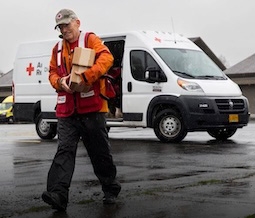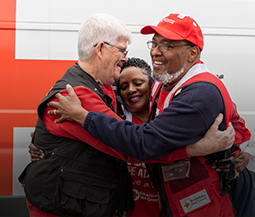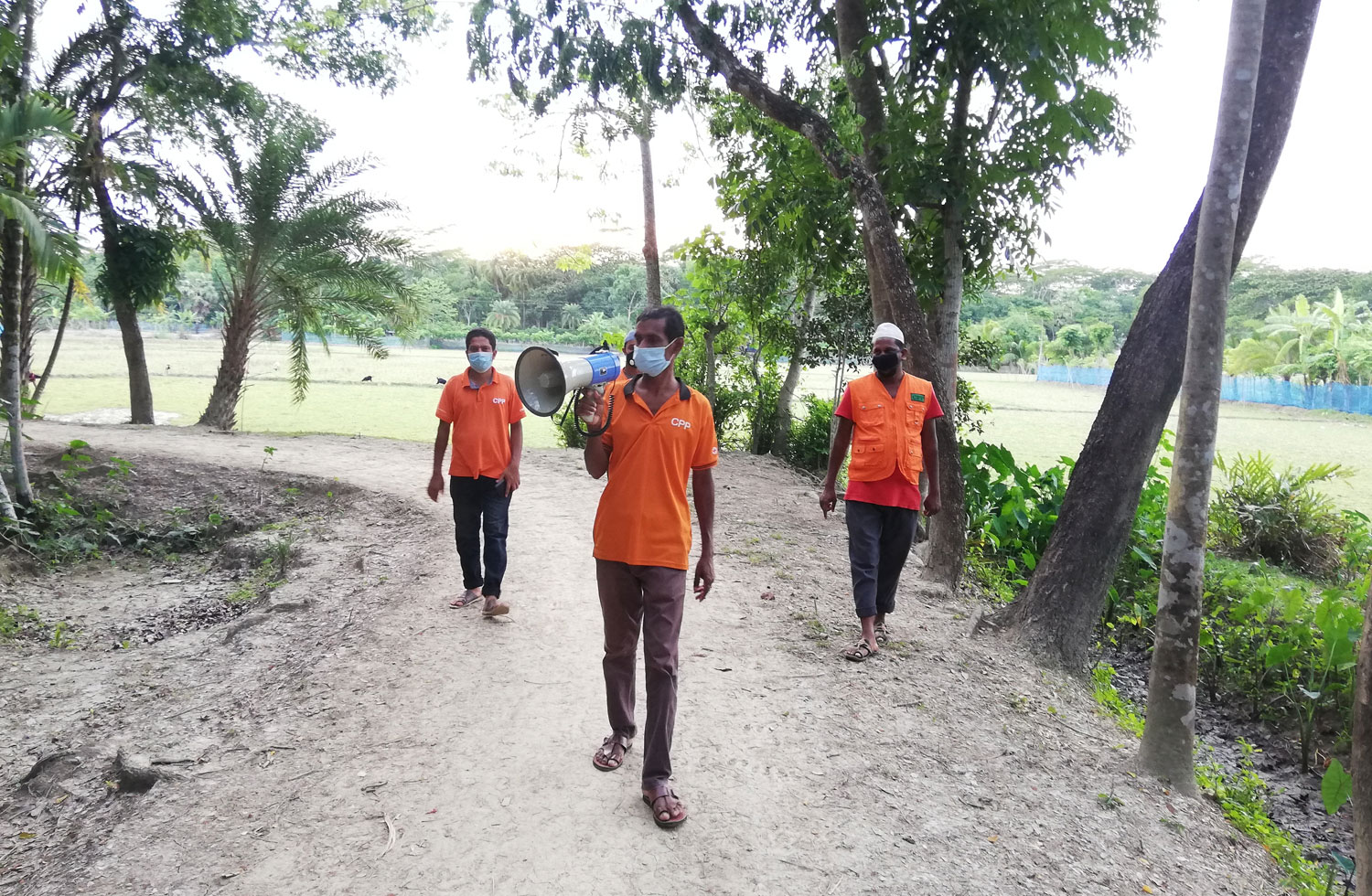As Cyclone Amphan barrels towards South Asia, communities are taking action to stay safe. Heavy rainfall, high winds and storm surges threaten coastal communities in Bangladesh and India. While Myanmar is not in the cyclone’s direct path, heavy rain, strong winds and storm surges are expected to affect northern parts of the country, including Rakhine state.
In Bangladesh, the super cyclone—the strongest ever recorded in the Bay of Bengal— is forecast to make landfall near poor, densely populated areas with unreliable infrastructure. Thousands of Red Cross and Red Crescent volunteers have spent the past days warning families of the incoming threat, helping people in coastal areas to evacuate and preparing relief stocks.
In Bangladesh’s low-lying deltas, many communities are only accessible by small brick paths. Local volunteers are using bicycles, motorbikes, 3-wheeled rickshaws or walking by foot with megaphones in hand, urging families to take the threat seriously, pack what they need and get to safety.
Storm preparedness and relief efforts are complicated by the presence of the coronavirus. In Bangladesh, the government has asked people to arrive at evacuation centers with their own masks. Authorities have prepared more than 12,000 evacuation shelters—three times as many as in previous years—to help ensure physical distancing and other COVID-19 hygiene measures. In India, coronavirus quarantine centers are already being shifted further inland to accommodate the cyclone evacuees.
Bangladesh faces regular cyclone threats, so the American Red Cross and the Bangladesh Red Crescent have been training people on first aid for years—in preparation for cyclone season and other weather emergencies. Equipping community members with lifesaving skills means they can be their own first responders when disasters strike. See photos of a disaster simulation here.
In Cox’s Bazar, refugees prepare for the worst
While the cyclone is not currently forecast to make a direct hit on the Cox’s Bazar district, heavy rain and strong winds are raging and could cause major damage to refugees’ temporary shelters, which sit on muddy hills near the Myanmar/Bangladesh border.
Volunteers—who are refugees themselves—have been sharing early warnings and going door-to-door to ease fears. They are reminding people to strengthen their shelters by tying down roofs and laying sand bags to the edges of their homes to prevent flooding.
Since settling in the Cox’s Bazar camps more than two years ago, migrant families have been acutely aware of storm threats—experiencing regular flooding and erosion that put lives at risk. The American Red Cross and Bangladesh Red Crescent have been preparing families in the camps through first aid training, information and materials to strengthen their temporary shelters and other lifesaving skills. The Red Cross and Red Crescent manage regular disaster simulations (see a short video, here)—attended by thousands of refugees—that remind people how to respond when a cyclone strikes.
In addition to cyclone preparedness, the Red Cross and Red Crescent has been doing everything in its power to mitigate spread of coronavirus in the camps—including installing extra handwashing facilities, spreading hygiene messages and helping textile businesses pivot to mask-making. Despite efforts, the camps confirmed their first case of coronavirus last week. In the crowded camp, where physical distancing can be hard to maintain, the virus presents yet another challenge to people’s daily lives.
For regular updates, follow @IFRCAsiaPacific
The American Red Cross has spokespersons on the ground and AV materials available upon request.












